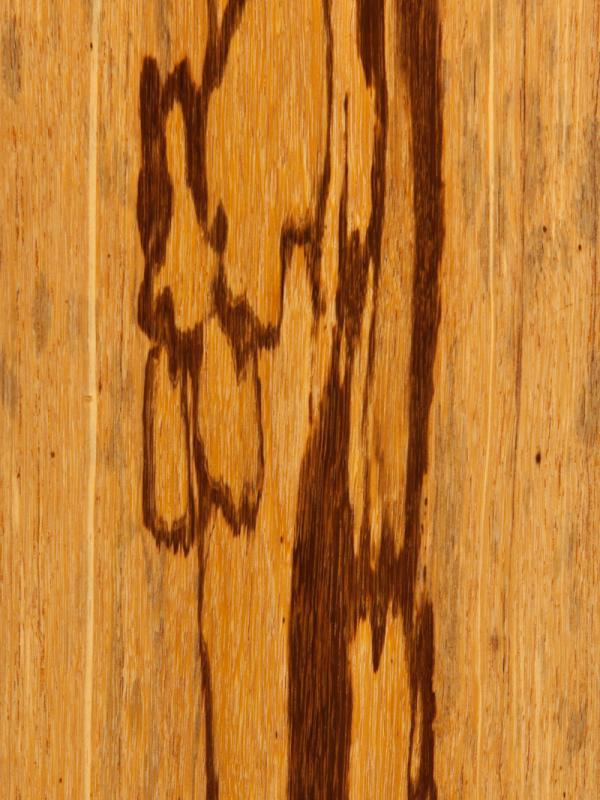
Family: Mimosaceae Family.
Origin: Northern South America, including French Guiana, Guyana, Suriname, Venezuela, Colombia, and Peru.
Common Names: Marblewood, Angelim Rajado.
The Tree: Marblewood trees are typically 65 to 100 feet tall with a maximum base diameter of 2 feet. The tree has wrinkled bark and a rounded canopy with curved leaves that are broad and dark green with three to four prominent veins with thickened veins on the edges. The flowers of the Marblewood tree have small round heads that are pale or golden yellow in color. Once the flowers have finished blooming, they are followed by large bunches of flat, brown seed pods containing black seeds.
Appearance of Wood: The heartwood is yellow to golden brown with distinct brown, purple or black streaks. The sapwood normally bears the same distinctive pale-yellow color as the heartwood only the heartwood has more distinct striping. The overall appearance is very similar to that of African Zebrawood only Marblewood has a finer texture.
Density: Marblewood is considered heavy and dense. Average reported specific gravity ranges from .77 to 1.00 with an average dried weight of 63 pounds per cubic foot. Janka Hardness is 2,530 pounds of force.
Dry and Shrinkage: Marblewood has a high natural resin content so proper and complete kiln drying is necessary to finish properly. Since Marblewood is such a dense wood, it dries very slowly. If the wood is too green when the working process is started, the wood may crack due to not being dried completely. Shrinkage values are 6.0% Radial, 10.5% Tangential, 17.5% Volumetric.
Working Properties: Marblewood can be difficult to work due to the density of the wood and the interlocking grain. While working with Marblewood will take patience and require sharp tools, the wood can deliver stunning results when finished. Fortunately, once the cutting process is complete, Marblewood will consent to gluing and finishing nicely. The hardness and density of Marblewood make it a good option for turning projects.
Durability: Marblewood is rated as durable to very durable to decay and is moderately resistant to insect attack. Marblewood is well suited for applications where strength and durability are key, like flooring and furniture.
Uses: Some of the most common uses of Marblewood is flooring, sliced veneer, turned objects, cabinetry, fine furniture, and carvings.
Availability: Currently Marblewood is not listed in CITES Appendices and does not appear on the IUCN Red List.